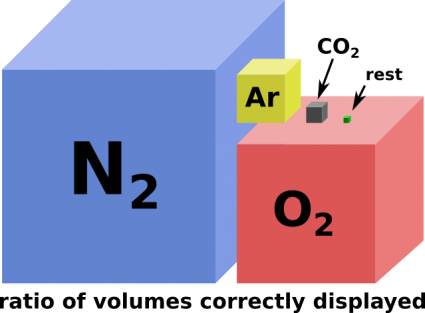Oxygen

(variable atmospheric humidity omitted)
Contents
[hide]Oxides
(TODO: discuss major ones here)
Carbon group / group IV / group 14 oxides
- CO2 normally the well known gas but highly explosive when in solid sp3 form (analog to quartz)
- SiO2 quartz and its various known polymorphs (~Mohs 7)
- GeO2 argutite Mohs 6-7 -- germanium is a rather rare element!
- SnO2 cassierite Mohs 6-7
- PbO2 [1] -- alpha-PbO2 scrutinyite -- beta-PbO2 plattnerite (TODO: find out Mohs hardness of PbO2 minerals)
(All those have rutile structure. See page about silicon.)
(TODO: Here maybe some pseudo phase diagrams can be made.)
Related
- Oxygen is the most abundant element on Earth (crust on surface). It's roughly on par with iron when looking at the whole Earh including the inaccessible interior. (The whole earth average may be a good representation of the elements distribution in the better accessible asteroid belt).
- Salts of oxoacids
- Hydroxides
- Binary diamondoid compounds
Peculiarities of oxygen
Towards an intuitive understanding of the O2 bond
The situation is as follows:
There are two to pi-bond molecular orbitals (sp2-hybridization overlap).
Each of these pi-bonds is filed with a pair of antiparallel spin paired electrons.
This part is just as what one would naively expected.
But in O2 the anti-binding modes of these two pi-bond molecular orbitals also are partially filled.
Which is effectively energetically sabotaging the pi-bonds bonds a bit.
This loss of bond strength is compensated by a third bond.
An sp3-hybridized sigma molecular orbital bond.
Naive representations of bonds can be quite misleading in the formation of an intuitive mostly correct intuition for the O2 double bond.
- ball and stick model bond representation: The sigma bond part is usually not shown and the anti-bonding parts of the pi bonds is hard to show.
- Bohr model bond representation: The often shown naive representation with electrons paired up is quite wrong.
There are attempts to a more accurate depiction in this representation which fair a bit better. See: https://en.wikipedia.org/wiki/Triplet_oxygen
Most elucidating to the situation may be the term diagram overlayed with the shape of the molecular orbitals that are associated with these terms.
(TODO: add illustrative material here)
Diradical in triplet state
Oxygen in its molecular form (aka dioxygen) is a diradical in triplet state. But what does that mean?
- "diradical" means it has two remaining lone electrons. It does not mean that there are two dangling bonds in the sense of empty binding orbitals. Instead the two unpaired electrons are actually in the anti-binding pi-orbitals.
- "triplet state" means that the remaining electrons have parallel spin. In the case of oxygen this increases the activation energy barrier. (TODO: look into how in the case of oxygen the unpaired spins lead to strongly reduced reaction rates -- I'd suspect "forbidden" transitions due to parity conservation -- requiring a third reaction partner … or so …)
Related
External links
- Unstable oxygen chain polymers: Hydrogen polyoxides (Wikipedia)
- Maybe of relevance: Surface properties of transition metal oxides (Wikipedia)
- Normal molecular oxygen in its tirplet state (Wikipedia)
- Highly reactive oxygen in singlet state (Wikipedia)
- Diradical (Wikipedia)
- Term diagram (Wikipedia)
- Antibonding molecular orbital (Wikipedia)